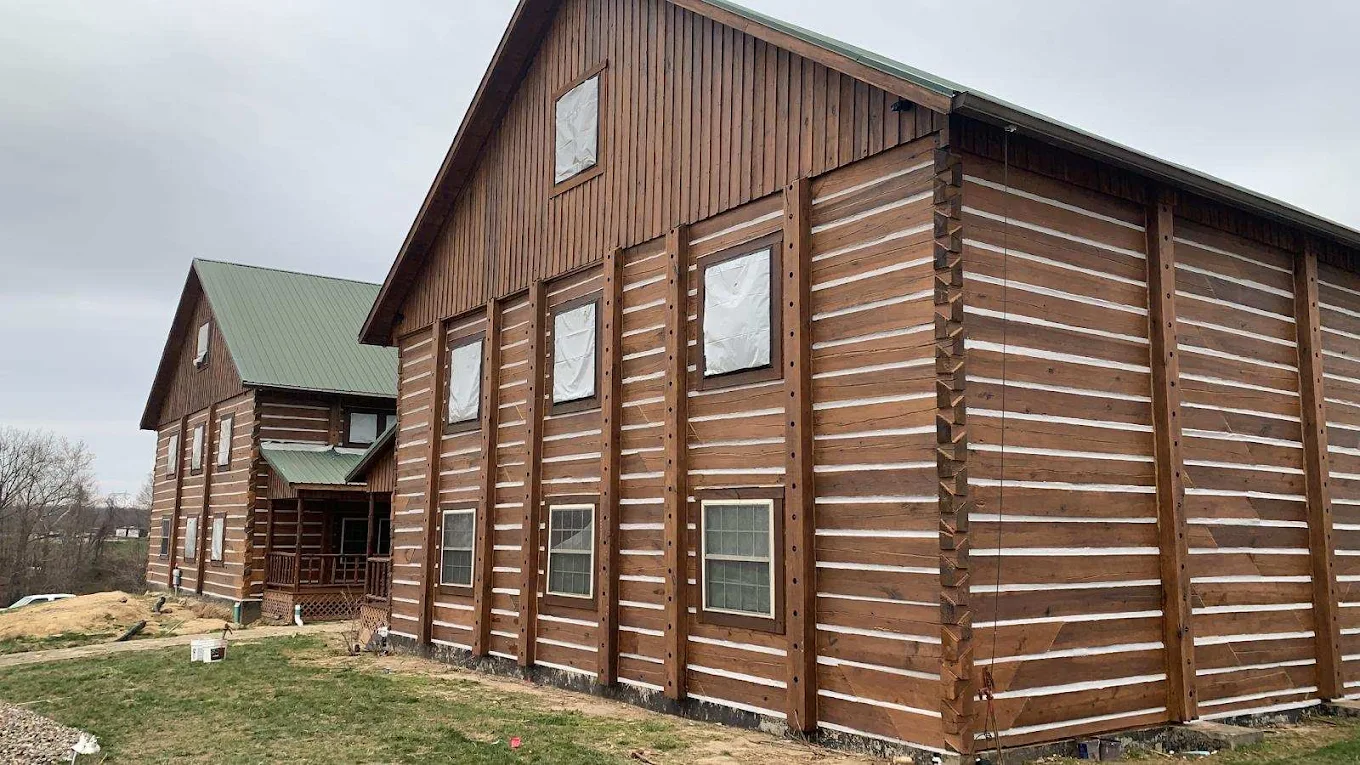
When summer temperatures climb, your log home can either be a naturally cool retreat, or an unexpected heat trap. One of the most overlooked but essential strategies to keep your home comfortable during hot months is proper sealing and chinking. While most people associate chinking with keeping out winter drafts, it’s just as important for keeping cool air in and hot air out during summer.
Let’s dive into why sealing and chinking matters, how it works, and what you can do to ensure your log home is summer-ready.
What Is Chinking, and Why Does It Matter in Summer?
Chinking is the flexible material applied between the logs of your home to seal gaps. Sealing includes caulking cracks, joints, and ends of logs to prevent air infiltration.
Over time, logs shift and settle creating small gaps where air, insects, and even moisture can sneak in. In the summer, these gaps become a highway for hot, humid air to invade your cool, conditioned space.
When properly applied, chinking and sealant act like a barrier, locking in your cooled air and stabilizing your indoor temperatures.
How Poor Sealing Impacts Summer Comfort
- Increased cooling bills: Your AC works overtime to compensate for air leaks.
- Hot spots and uneven cooling: Some rooms stay cool while others get stuffy.
- Higher humidity: Outside air can bring in extra moisture, making your home feel sticky.
- Faster wear and tear on HVAC systems: Air leaks force your system to cycle more frequently.
How to Seal and Chink for Summer Efficiency
-
Inspect Your Home Annually
Walk around your home in early spring. Look for:
- Cracked or peeling caulk
- Gaps between logs
- Signs of water damage or mildew
- Gaps around windows, doors, and vents
-
Reapply or Touch Up Chinking
Use a high-quality, flexible chinking material rated for both hot and cold climates. We recommend using the quality products offered at Sascho. Focus on:
- Horizontal log joints
- Vertical log ends
- Settlement gaps near windows and doors
-
Seal Check Around Windows and Doors
These are common leak points in log homes. Use expanding foam or silicone caulk for small gaps and weather stripping for doors.
-
Don’t Forget Log Ends and Corners
End grains are particularly porous. A proper sealant here prevents moisture and heat infiltration where it’s least expected.
-
Hire a Pro if Needed
If it’s been more than 5 years since your last full chinking job—or if you see significant cracking, peeling, or settling—consider bringing in a log home maintenance specialist.
Extra Tip: Pair Sealing With Other Summer Strategies
Sealing and chinking works best when combined with:
- Reflective window coverings
- Proper attic insulation
- Light-colored exterior stain
- Shade from trees or awnings
In Summary
Chinking and sealing aren’t just for winter protection, they’re a year-round necessity. By closing gaps, locking in cool air, and blocking out heat and humidity, you can enjoy a log home that feels as good in August as it does in January.
Now’s the time to inspect, repair, and refresh your log home. Your comfort, and your energy bill will thank you. If you want a team of experts to evaluate your chinking, give 888 Log Guys a call.








